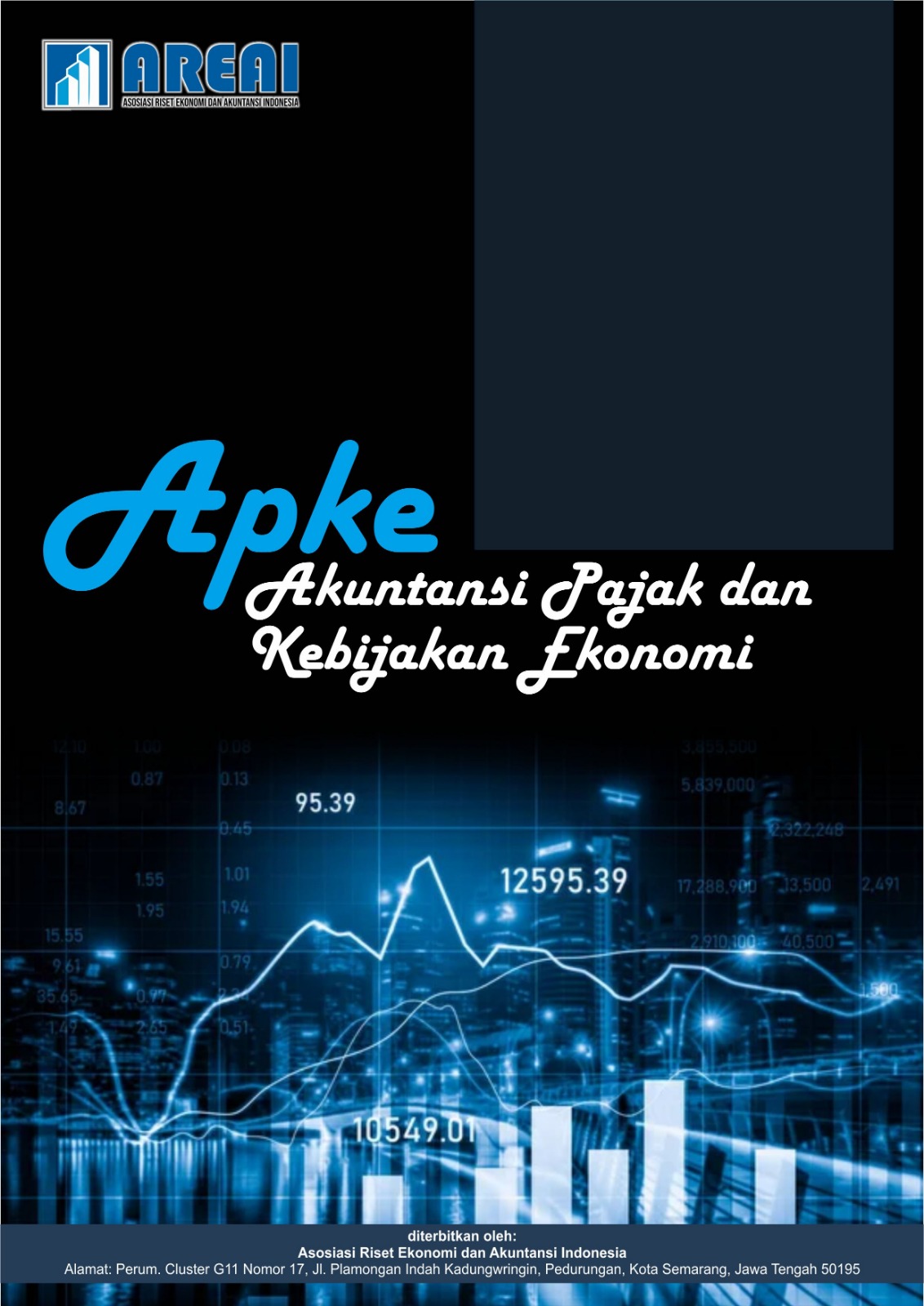Integrasi Teknologi Informasi Akuntansi dan Proteksi Sistem Informasi Akuntansi terhadap Cybersecurity Accounting di Era Digital
DOI:
https://doi.org/10.61132/apke.v2i3.1429Keywords:
Accounting Information, Cybersecurity Accounting, System Protection, TechnologyAbstract
This study aims to examine the influence of accounting information technology and accounting information system protection on cybersecurity accounting. Using a quantitative approach, data were collected through a structured survey of 100 respondents, selected using purposive sampling, and analyzed to assess the relationship between the research variables. The research instrument consisted of three main constructs: Accounting Information Technology (X1), Accounting Information System Protection (X2), and Cybersecurity Accounting (Y), each measured using 16 question items. Instrument validity testing revealed that 44 out of 48 items met the validity threshold, with correlation coefficients exceeding 0.300, while reliability analysis indicated Cronbach’s Alpha values greater than 0.60 for all variables, confirming internal consistency. Data analysis was performed using multiple linear regression. The results demonstrate that accounting information technology has a positive and statistically significant effect on cybersecurity accounting (coefficient = 0.264; p < 0.05), suggesting that the integration and optimization of technology in accounting processes contribute to enhanced cybersecurity practices. Conversely, accounting information system protection exhibits a negative and statistically significant effect on cybersecurity accounting (coefficient = -0.149; p < 0.05). This unexpected finding indicates that certain protective measures within accounting information systems may, under certain conditions, hinder cybersecurity performance, potentially due to implementation complexity, inadequate configuration, or user resistance. The regression model as a whole is statistically significant (F = 18.577; p = 0.000), with a coefficient of determination (R²) of 0.277. This implies that the two independent variables together explain 27.7% of the variance in cybersecurity accounting, while the remaining 72.3% is attributable to other factors not examined in this study.
Downloads
References
Aulia Rahma Qur’ani. (2022, July 19). Penerapan teknologi informasi di bidang akuntansi. Serambiupdate.com. https://www.serambiupdate.com/2022/08/penerapan-teknologi-informasi-bidang.html
Bharadwaj, A. S., Sambamurthy, V., Smith, R. H., & Zmud, R. W. (1999). IT capabilities: Theoretical perspectives and empirical operationalization. https://doi.org/10.1145/352925.352962
Cahyono, I., Marsitiningsih, M., & Widodo, S. (2020). Peran Badan Pengawas Obat dan Makanan terhadap peredaran obat tradisional yang mengandung bahan kimia obat berbahaya dalam perlindungan konsumen. Kosmik Hukum, 19(2).
Eko Prasetyo, S., & Mindy, A. (2025). Implementasi multi-factor authentication untuk optimalisasi keamanan akses data. Jurnal Manajemen Informatika (JAMIKA), 15(1). https://doi.org/10.34010/jamika.v15i1.14190
Endaryati, E., Kom, S., & Si, M. (2021). Sistem informasi akuntansi.
Freeman, R. E., & Menghwar, P. S. (2024). Stakeholder theory and communities: Navigating processes of meaningful engagement with marginalized communities. In The Routledge handbook on meaningful stakeholder engagement (pp. 43–55). Taylor and Francis. https://doi.org/10.4324/9781003388227-4
Freeman, R. E., & Verlag, R. H. (2024). The stakeholder approach revisited. www.ssoar.info
Gordon, L. A., Loeb, M. P., & Zhou, L. (2021). Information segmentation and investing in cybersecurity. Journal of Information Security, 12(1), 115–136. https://doi.org/10.4236/jis.2021.121006
Hapsah Fatni, Z., & Nastion Padli Irwan, M. (2023). Analisis tingkat keamanan data perusahaan yang rentan terhadap serangan cyber dalam sistem informasi manajemen. Wanargi. https://doi.org/10.62017/wanargi
Harrison, J. S., Freeman, R. E., & de Abreu, M. C. S. (2015). Stakeholder theory as an ethical approach to effective management: Applying the theory to multiple contexts. Revista Brasileira de Gestão de Negócios, 17(55), 858–869. https://doi.org/10.7819/rbgn.v17i55.2647
Hasan, L., Hossain, M. Z., Johora, F. T., & Hasan, M. H. (2024). Cybersecurity in accounting: Protecting financial data in the digital age. European Journal of Applied Science, Engineering and Technology, 2(6), 64–80. https://doi.org/10.59324/ejaset.2024.2(6).06
Hatta, M., & Rahmah, G. (2024, December 19). Daftar serangan ransomware ke lembaga keuangan Indonesia: BI, BSI, dan terbaru BRI. Tempo. https://www.tempo.co/sains/daftar-serangan-ransomware-ke-lembaga-keuangan-indonesia-bi-bsi-dan-terbaru-bri-1183490
Husna, H., Nasution, A. K., Afriliani, I., & Fitriana, N. (2024). Manajemen risiko keamanan sistem informasi akuntansi pada perusahaan otomotif PT. Astra Internasional. Jurnal Akuntansi Keuangan dan Bisnis, 2(2), 296–299. https://jurnal.ittc.web.id/index.php/jakbs/index
Janvrin, D. J., & Wang, T. (2019). Implications of cybersecurity on accounting information. Journal of Information Systems, 33(3), A1–A2. https://doi.org/10.2308/isys-10715
Kafi, A., & Akter, N. (2017). Securing financial information in the digital realm: Case studies in cybersecurity for accounting data protection.
Kania Sutisnawinata. (2023, July 12). Keamanan siber dalam industri akuntansi. ASDF.ID. https://www.asdf.id/keamanan-siber-dalam-akuntansi/?utm_source=chatgpt.com
Lehenchuk, S. F., Vygivska, І. M., & Hryhorevska, O. O. (2022). Protection of accounting information in the conditions of cyber security. Problems of Theory and Methodology of Accounting, Control and Analysis, 2(52), 40–46. https://doi.org/10.26642/pbo-2022-2(52)-40-46
Lindemulder, G., & Kosinski, M. (2024, July 12). Apa itu keamanan siber? IBM. https://www.ibm.com/id-id/topics/cybersecurity
Madani, L., Sofia, A., Widarsono, A., Akuntansi, J. P., & Keuangan, D. (2024). The influence of cybersecurity disclosure, tax risk, reputation and auditor experience on audit quality. JPAK: Jurnal Pendidikan Akuntansi dan Keuangan, 12(2), 138–149. https://doi.org/10.17509/jpak.v12i2.64236
Morshed, A., & Khrais, L. T. (2025). Cybersecurity in digital accounting systems: Challenges and solutions in the Arab Gulf region. Journal of Risk and Financial Management, 18(1). https://doi.org/10.3390/jrfm18010041
Nurwanah, A. (2024). Cybersecurity in accounting information systems: Challenges and solutions. Advances in Applied Accounting Research, 2(3), 157–168. https://doi.org/10.60079/aaar.v2i3.336
Poeja Kehista, A., Fauzi, A., Tamara, A., Putri, I., Fauziah, N. A., Klarissa, S., & Damayanti, V. B. (2023). Analisis keamanan data pribadi pada pengguna e-commerce: Ancaman, risiko, strategi kemanan (literature review). Jurnal Ilmiah Mahasiswa Teknik (JIMT), 4(5). https://doi.org/10.31933/jimt.v4i5
Putri, E. P., & Elmina Martha, A. (2022). The importance of enacting Indonesian data protection law as a legal responsibility for data leakage. Varia Justicia, 17(3), 287–303. https://doi.org/10.31603/variajusticia.v17i3.6231
Salim, H., & Madnick, S. (2016). Cyber safety: A systems theory approach to managing cyber security risks – Applied to TJX cyber attack.
Saputra, L. A., Akbar, F. M., Cahyaningtias, F., Ningrum, M. P., & Fauzi, A. (2023). Ancaman keamanan pada sistem informasi manajemen perusahaan. Jurnal Pendidikan Siber Nusantara. https://doi.org/10.38035/jpsn.v1i12
Siponen, M., Rönkkö, M., L., F., Haag, S., & Laatikainen, G. (2023). Protection motivation theory in information security behavior research: Reconsidering the fundamentals research (Vol. 53). http://aisel.aisnet.org/cais/
Sugiyono. (2013). Metode penelitian kuantitatif.
Vanhorn, S. (2021). Accounting information systems. FuzzBones/Shutterstock.
Yosepha Debrina Ratih Pusparisa. (2024, December 19). Tak pernah transparan, serangan ke sektor perbankan terus berulang. Kompas.id. https://www.kompas.id/artikel/lagi-dugaan-serangan-siber-terhadap-sektor-perbankan
Downloads
Published
How to Cite
Issue
Section
License
Copyright (c) 2025 Akuntansi Pajak dan Kebijakan Ekonomi Digital

This work is licensed under a Creative Commons Attribution-ShareAlike 4.0 International License.





